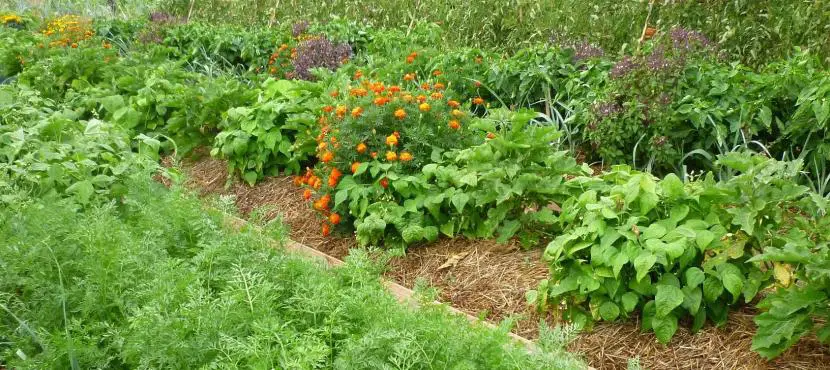

Image – Garden of the Apothecary
Everything in nature has its role, and this is something that organic farming has always tried to respect, and even help to do so. When we talk about plants for human consumption, this issue becomes even more important, since if we feed the garden with organic and ecological fertilizers, in the end we will obtain food of excellent quality that they will not harm our health at all, rather, quite the opposite.
Well, if we want to have a garden that respects the environment and, therefore, benefits us in a very special way, take note because we are going to talk about the synergistic agriculture.
What is synergistic agriculture?


Image – Farm-School The Illusion
Synergistic agriculture is a farming system developed by the late Emilia Hazelip, who passed away in 2003, which is based on the principle that the land allows plants to grow and, in turn, plants create fertile soil thanks to their radical exudates, the organic residues they leave behind and their chemical activity, as well as microorganisms, bacteria, fungi and worms.
It is often thought that plants extract nutrients from the soil, and therefore, once the crops are finished, it is necessary to replace them. But this is a small part of reality. It is known that when you have a plantation, for example, of eucalyptus, if you want to plant other plants tomorrow, you have to fertilize the soil because eucalyptus are trees that, if they have it within reach, “feed” on all the nutrients you can find in the soil. But this, as we say, is only part of the story.
Plants, as we know, photosynthesize in order to feed and grow. To do this, they need water and energy from the sun. Nothing more. Therefore, synergistic agriculture does not support the idea of fertilizing the soil with compost or other organic fertilizers, unless it is used to mulch the plants, without mixing it with the soil, since This type of culture is based on the principle that microorganisms, that is, worms, insects, etc. that live below ground level, are the ones that really provide the nutrients to it.
Principles of synergistic agriculture
The principles of this type of agriculture are four:
- Keep the ground uncompacted and undisturbed.
- Use the soil’s own fertility as compost.
- Integrate the waste area in the agricultural soil profile.
- Develop and establish collaborations with beneficial organisms that protect crops.
How to make a synergistic garden?


picture – My synergistic garden
The synergistic garden is much easier to do than you might initially think. In fact, you just have to follow these steps:
- First you have to build raised beds with the first 15-20cm. of dirt from the roads that surround it.
- Then, drip irrigation system is installed.
- Next, we proceed to sow or plant horticultural plants.
- Finally I know they place tutors those that need it, such as tomato plants or cucumbers.
Have you heard of this type of agriculture? What do you think?
